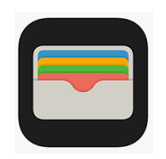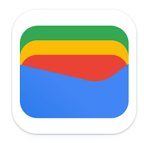Cómo…
Consigo una cartera digital (PayPal, Apple Pay, Google Wallet)
Para usar una cartera digital para pagar tanto online como fuera de línea, tendrás que crear una cuenta con el proveedor de la cartera digital y añadir tus métodos de pago, como tarjetas de crédito o débito, a la cartera. Una vez configurada la cuenta y añadidos los métodos de pago, podrás utilizar la cartera digital para efectuar pagos.
Para realizar un pago con tu cartera digital, tienes que abrir la aplicación de cartera en tu dispositivo móvil y seleccionar el método de pago que deseas utilizar. Después, en el punto de venta, puedes escanear un código QR o tocar con el dispositivo un terminal de pago sin contacto para completar el pago.
También puedes utilizar tu cartera digital para realizar pagos online. Para ello, tendrás que seleccionar la opción de pagar con una cartera digital cuando se te solicite el pago en el sitio web de la tienda o comercio online. A continuación, sigue las instrucciones de la aplicación de la cartera digital para completar el pago.
Usar una cartera digital es relativamente simple y directa. Con unos pocos pasos para configurar tu cuenta y agregar tus métodos de pago, puedes usar tu cartera digital para realizar pagos de manera rápida y sencilla.
PayPal
Página web: https://www.paypal.com/uk/home
App:

- Abre la cámara de tu teléfono
- Escanea el código QR (La figura críptica de la izquierda se llama QR-Code. Cuando escaneas uno, normalmente se abre automáticamente una página web. En este caso te preguntará si quieres descargar la app de PayPal).
- Obtén la aplicación
Apple Pay/Apple wallet

- El Apple Wallet está preinstalado en todos los iPhone actuales. Busca la aplicación.
- Luego pulsa en Añadir tarjeta y sigue las indicaciones para añadir tu nueva tarjeta.
Google Pay Wallet

- Descarga la aplicación Google Wallet.
- Abre la aplicación Google Wallet.
- Si eres nuevo en Google Wallet, se te pedirá que añadas una tarjeta la primera vez que abras la aplicación. Puedes introducir los datos manualmente o hacer una foto de la tarjeta.
Uso una tarjeta de crédito / débito nacional online
Para utilizar una tarjeta de crédito en Internet, es necesario tener una cuenta de tarjeta de crédito en un banco o entidad financiera. Tendrás que disponer de los datos de la tarjeta de crédito, como el número de tarjeta, la fecha de caducidad y el código de seguridad, ya sea físicamente o guardados en un e-cartera.
Una vez que tengas estos datos, podrás utilizar tu tarjeta de crédito para hacer compras por Internet siguiendo estos pasos:
- Entra en la página web de la tienda online o comercio en el que quieras realizar una compra.
- Selecciona los artículos que deseas adquirir y añádelos a tu cesta de la compra.
- Procede al pago e introduce tus datos de envío y facturación.
- Cuando se le solicite el pago, seleccione la opción de pagar con tarjeta de crédito.
- Introduce los datos de tu tarjeta de crédito, como el número de tarjeta, la fecha de caducidad y el código de seguridad, así como cualquier otra información requerida.
- Revisa y confirma los datos del pago y envíalo.
Una vez efectuado el pago, se procesará la transacción y se cargará el importe de la compra en tu tarjeta de crédito. Recibirás una confirmación del pago y se te enviarán los artículos adquiridos.
En general, utilizar una tarjeta de crédito en Internet es una forma sencilla y cómoda de realizar compras. Siguiendo los pasos anteriores, puedes utilizar tu tarjeta de crédito para realizar pagos en línea de forma rápida y segura.
Uso la Banca online
Para utilizar una transferencia bancaria para pagar por Internet, debes tener una cuenta en un banco o entidad financiera que ofrezca servicios de banca electrónica. También necesitarás los datos de la cuenta bancaria del destinatario, como el número de cuenta y el número de identificación bancaria, así como el importe que quieres transferir.
Una vez que tengas estos datos, puedes utilizar una transferencia bancaria para hacer un pago online siguiendo estos pasos:
- Entra en la web o en la app de tu banco.
- Accede a tu cuenta bancaria.
- Elige hacer una transferencia de dinero.
- Introduce los datos de la cuenta bancaria del destinatario, como el número de cuenta y el número de ruta, así como el importe que quieres transferir.
- Revisa y confirma los datos del pago y envíalo.
- Antes de finalizar la transacción se te pedirá que autorices el pago introduciendo un PIN o, más probablemente, utilizando tu huella dactilar o Face ID (reconocimiento facial).
- Selecciona los artículos que quieres comprar y añádelos a tu cesta de la compra.
Después de enviar el pago, se procesará la transacción y los fondos se transferirán de tu cuenta bancaria a la del destinatario. Recibirás una confirmación del pago.
